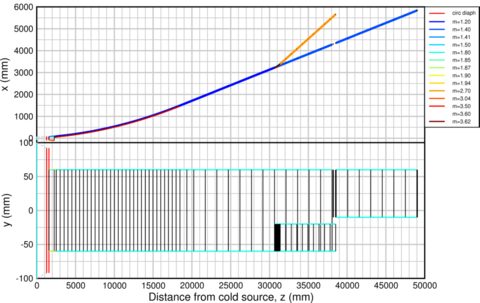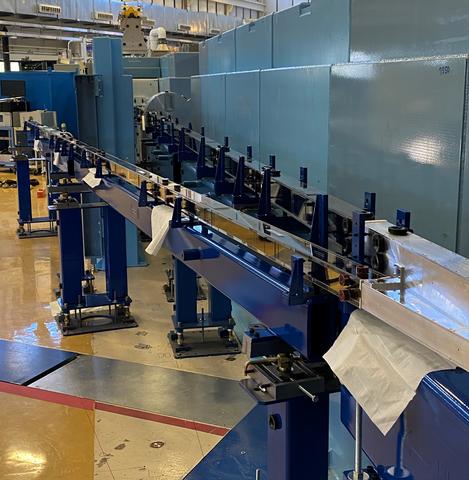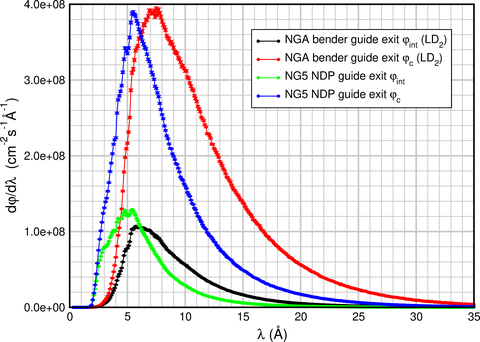Neutron Depth Profiling on NG-A′
For several years, neutron depth profiling (NDP) has occupied an end position on NG-5. However, to develop an internationally competitive cold-neutron triple-axis spectrometer requires an advanced guide and more importantly a position at the end of a guide. The cold source outage is a perfect opportunity to upgrade NG-5 to serve such an instrument. That means that NDP needs a new location.
NG-A serves the neutron spin echo spectrometer, but the instrument only uses of the top portion of the guide. This made it possible to use a multichannel bender to extract a beam from the lower portion of the guide. The bender is 0.8 m long with a radius of curvature of 4.52 m. Si wafers (thickness = 0.3 mm) define 23 channels have coatings with m = 3.5 and 1.5 on the concave and convex surfaces, respectively. The bender extracts a beam 50 mm wide by 40 mm tall at an angle of about 10○. The new guide, NG-A′, which transports the beam about 7½ m to the NDP instrument, has m = 2.5 and m=1.8 coatings on the sides and top/bottom respectively. The diagram below shows the guide profile. Note the dimensions of the x and y axes are very different distorting the guide shape. The vertical lines delineate each segment of the guide, while the color on edge refers to the guide coating.


NG-A bends strongly before reaching the guide hall. This combined with the NG-A′ bender, means that relatively few short wavelength neutrons make it to the NDP instrument. This does not compromise the performance because NDP is a neutron capture technique and absorption cross-sections typically increase with \(\lambda\). The plot below compares the calculated incident flux and capture flux as a function of neutron wavelength. The shift to longer wavelengths at the new position is readily apparent. With the new D2 cold source, the expected capture flux at the end of NG-A′ is about 3.7 x 109 n/cm2/s, a gain of about 50% over the current location. This increase will enable shorter data acquisition times, reducing overall experiment time and increase the instruments ability to do in-situ, in-operando kinetic studies of light elements in dynamic systems. Future research projects on this new beam-line will include Li-ion battery kinetic studies, evaluation of kinetic materials, astrophysics metrology studies, and the durability of infrastructure materials.


